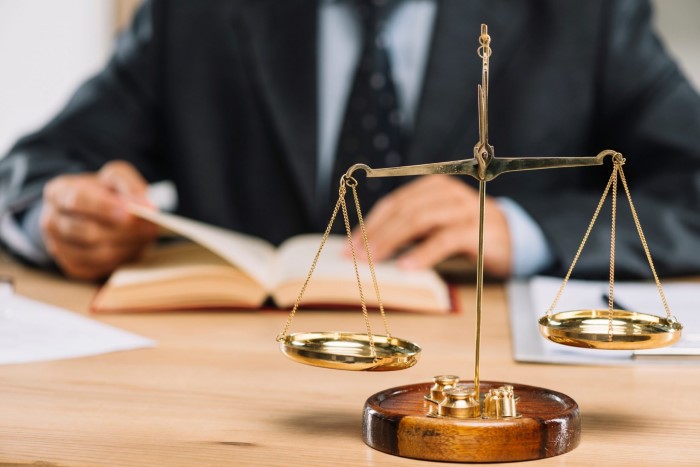Polybutylene pipe, a type of plastic plumbing material widely used in residential and commercial buildings from the late 1970s to the mid-1990s, has been the subject of numerous lawsuits due to its susceptibility to failure and subsequent water damage. This article explores the polybutylene pipe lawsuit landscape in 2021, discussing the issues surrounding these pipes, legal implications, and potential remedies available for affected property owners.
1. Understanding Polybutylene Pipe and Its Risks
Polybutylene pipe was once hailed as an affordable and easy-to-install alternative to traditional copper piping systems. It gained popularity in the 1980s and early 1990s due to its flexibility and cost-effectiveness. However, over time, issues related to the material’s durability and performance began to emerge.
1.1 The Composition and Installation of Polybutylene Pipes
Polybutylene pipes are made of a plastic resin called polybutylene, which is known for its flexibility and resistance to corrosion. The pipes were typically installed using copper or brass fittings and secured with crimp rings. The combination of plastic pipes and metal fittings was believed to provide a reliable plumbing system.
1.2 The Susceptibility of Failure
Unfortunately, polybutylene pipes have proven to be highly susceptible to premature failure. Factors such as chlorine in the water supply, exposure to ultraviolet light, and high levels of water pressure can weaken the pipes over time, leading to leaks, cracks, and burst pipes. These failures can result in significant property damage and financial loss for homeowners and building owners.
2. The History of Polybutylene Pipe Lawsuits
The issues with polybutylene pipes came to public attention in the 1980s when reports of leaks and failures started to surface. As the scale of the problem became apparent, numerous lawsuits were filed against manufacturers, suppliers, and contractors involved in the installation of these pipes.
2.1 Early Lawsuits and Widespread Awareness
By the late 1980s, it became evident that polybutylene pipes were causing substantial water damage in many homes and buildings. Lawsuits were filed alleging that the manufacturers failed to adequately warn consumers about the risks associated with these pipes. Awareness of the issues spread, leading to more legal actions and a greater focus on finding solutions.
2.2 Class Action Lawsuits and Settlements
In the 1990s, class action lawsuits were initiated against the major manufacturers of polybutylene pipes. These lawsuits aimed to provide compensation to property owners affected by the failures. Settlements were reached in some cases, allowing individuals to claim reimbursement for repair and replacement costs, as well as damages caused by water leaks.
3. Common Problems Associated with Polybutylene Pipes
Polybutylene pipes have been linked to various problems that can have serious consequences for property owners.
3.1 Leaks and Burst Pipes
The primary issue with polybutylene pipes is their tendency to develop leaks and burst unexpectedly. These failures can occur due to the combined effects of chemical reactions with water additives and stress on the pipe material. Leaks and burst pipes can cause significant water damage to walls, ceilings, flooring, and personal belongings.
3.2 Hidden Water Damage
One of the challenges with polybutylene pipe failures is that the damage is often not immediately noticeable. Water can seep into walls, insulation, and other concealed areas, leading to mold growth, structural damage, and decreased indoor air quality. Detecting and addressing hidden water damage can be a complex and costly process.
3.3 Health Concerns and Mold Growth
The presence of water damage and mold growth resulting from polybutylene pipe failures can pose health risks to occupants. Exposure to mold spores can trigger respiratory problems, allergies, and other adverse health effects. Addressing these health concerns requires professional remediation and restoration.
4. Evaluating Your Legal Options
If you have polybutylene pipes in your property and have experienced issues or are concerned about potential problems, it is crucial to understand your legal options.
4.1 Determining Liability: Manufacturers and Contractors
Identifying the parties responsible for the installation and supply of polybutylene pipes can be complex. Manufacturers, suppliers, and contractors may share liability depending on the specific circumstances. A qualified attorney can help investigate the case and determine the appropriate parties to hold accountable.
4.2 Statute of Limitations and Filing Deadlines
It’s important to be aware of the statute of limitations and filing deadlines associated with polybutylene pipe lawsuits. These time restrictions vary by jurisdiction and can significantly impact your ability to seek legal remedies. Consulting with an attorney promptly is essential to avoid missing crucial deadlines.
4.3 Documenting Damages and Losses
To strengthen your case, it is vital to document all damages and losses resulting from polybutylene pipe failures. This includes photographs, repair invoices, receipts, and any other evidence that demonstrates the extent of the damage and the financial burden it has imposed.
5. Steps to Take if You Have Polybutylene Pipes
If you suspect or know that your property contains polybutylene pipes, consider taking the following steps:
5.1 Inspecting and Monitoring Your Plumbing System
Engage a professional plumber to inspect your plumbing system and assess the condition of the pipes. Regular monitoring can help detect early signs of deterioration and minimize the risk of significant failures.
5.2 Contacting a Qualified Attorney
Seek the advice of a qualified attorney experienced in handling polybutylene pipe lawsuits. They can evaluate your situation, explain your legal rights, and guide you through the legal process.
5.3 Collecting Evidence and Documentation
Gather all relevant documentation, including purchase records, installation contracts, and any previous repair invoices related to your polybutylene pipes. This evidence will be crucial in building your case and seeking compensation for damages.
6. Legal Remedies and Compensation
If you have suffered damages due to polybutylene pipe failures, several potential legal remedies, and compensation options may be available.
6.1 Repair and Replacement Costs
You may be entitled to reimbursement for the cost of repairing or replacing your polybutylene plumbing system. This includes labor, materials, and associated expenses necessary to restore your property to its pre-damage condition.
6.2 Property Damage and Restoration Expenses
Compensation for property damage caused by polybutylene pipe failures can cover a wide range of expenses. This may include repairing walls, ceilings, and flooring, as well as restoring personal belongings damaged by water intrusion.
6.3 Compensation for Personal Belongings and Inconvenience
In some cases, compensation may extend beyond physical damages. You may be eligible for reimbursement for the loss of personal belongings and the inconvenience caused by the water damage. Consult with your attorney to understand the potential compensation you may be entitled to under the law.
7. Frequently Asked Questions (FAQs)
Is there a deadline for filing a polybutylene pipe lawsuit?
The deadline for filing a polybutylene pipe lawsuit varies by jurisdiction and the specific circumstances of your case. It is essential to consult with a qualified attorney to understand the applicable deadlines in your situation.
Can I sue if I haven’t experienced any issues yet?
Yes, you may still have legal options even if you haven’t experienced any issues with your polybutylene pipes. Contacting an attorney to discuss your concerns and assess your situation is advisable.
What factors determine the compensation amount?
The compensation amount in polybutylene pipe lawsuits depends on various factors, including the extent of property damage, repair and replacement costs, personal belongings affected, and the inconvenience caused. An attorney can help you evaluate these factors and pursue appropriate compensation.
Should I contact my insurance company?
It is recommended to notify your insurance company about the polybutylene pipe issues and potential damages. However, it’s important to consult with an attorney first to understand your legal rights and obligations before interacting with your insurance provider.
How can I find a reliable attorney for my case?
To find a reliable attorney for your polybutylene pipe lawsuit, consider seeking referrals from trusted sources, conducting online research, and scheduling consultations with potential attorneys. Look for attorneys with experience in handling similar cases and a track record of success.
8. Conclusion
Polybutylene pipe failures continue to be a significant concern for property owners, leading to water damage, property loss, and potential health risks. If you have polybutylene pipes in your property, it is essential to understand your legal rights and options. By consulting with an experienced attorney, documenting damages, and pursuing legal remedies, you can seek compensation for the losses you have suffered.
_Disclaimer: This article is for informational purposes only and does not constitute legal advice. Consult with a qualified




